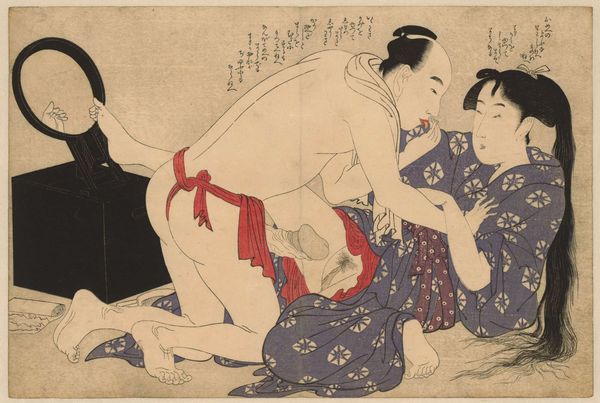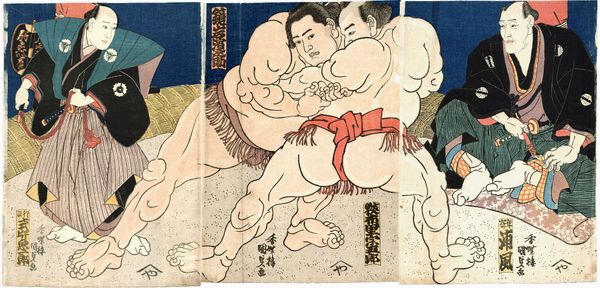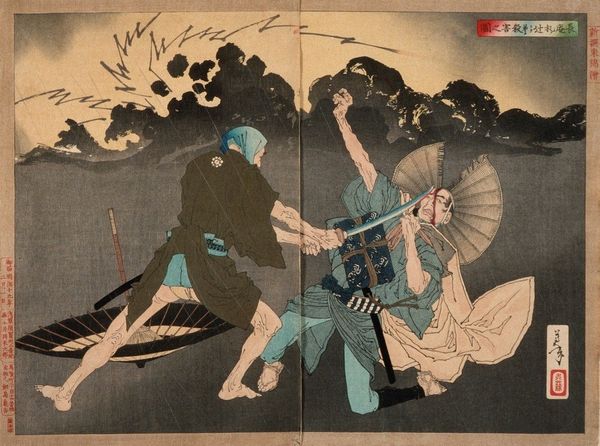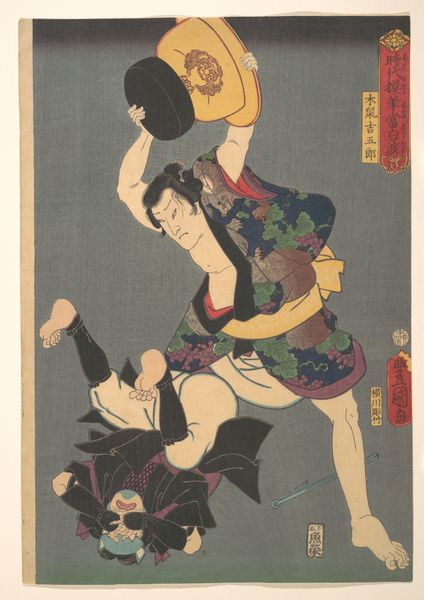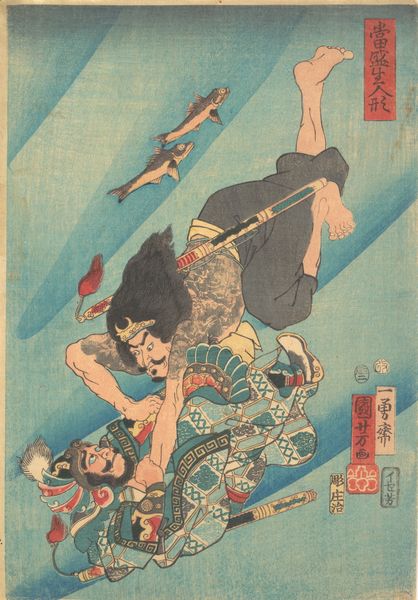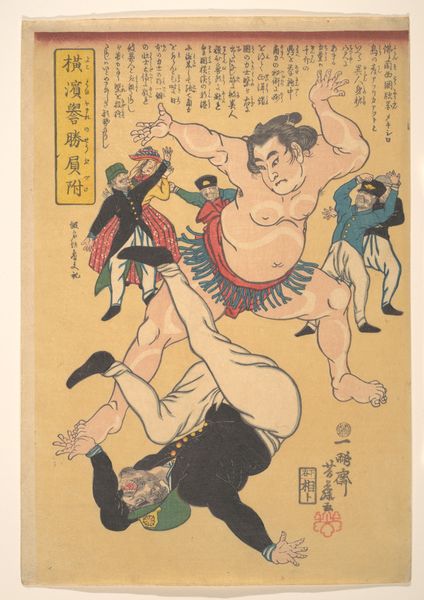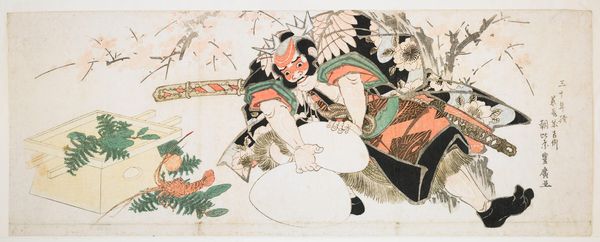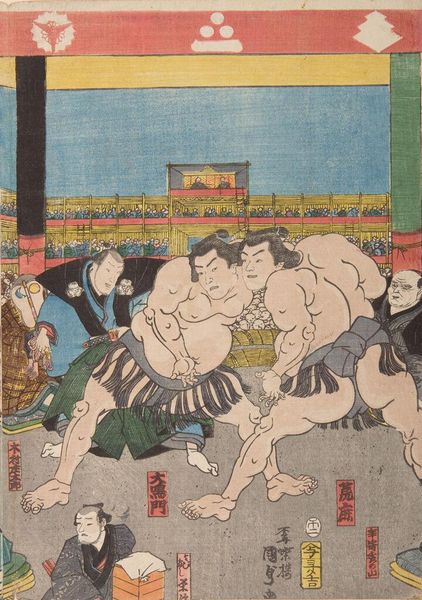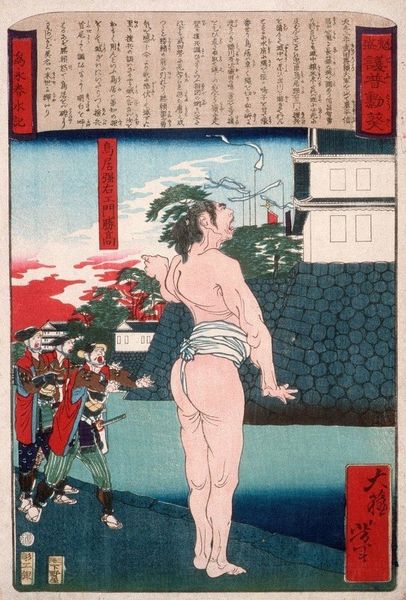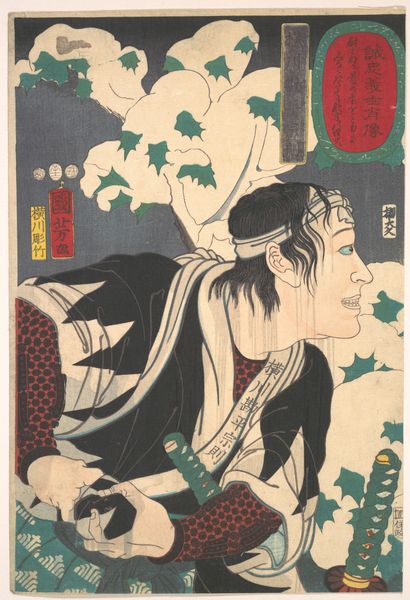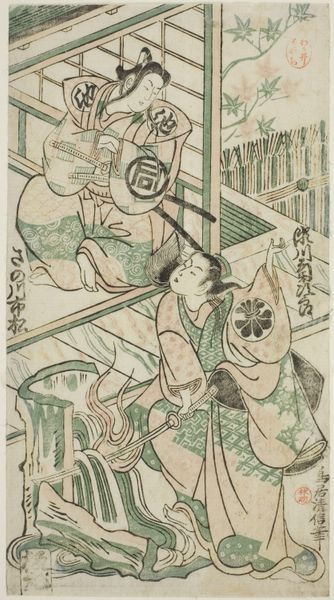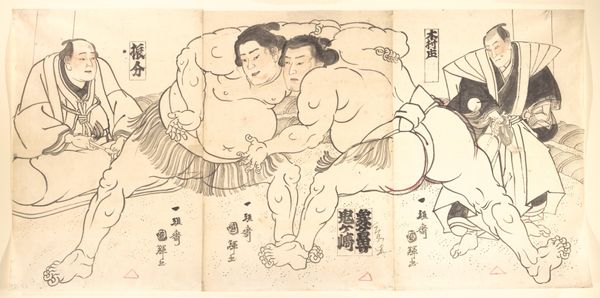
Yotsuguruma Daihachi and Kotengu Heisuke Duel during the Battle of the Wrestlers and the Firemen at Shinmei Shrine 1886
0:00
0:00
Copyright: Public Domain: Artvee
Curator: Here we have Tsukioka Yoshitoshi’s woodblock print from 1886, entitled "Yotsuguruma Daihachi and Kotengu Heisuke Duel during the Battle of the Wrestlers and the Firemen at Shinmei Shrine". Editor: The chaotic energy leaps off the page. It's almost overwhelming, with so many figures packed into the composition. The immediate impression is raw power clashing against agility, rendered in a bold, graphic style. Curator: Indeed. Yoshitoshi, in this later stage of his career, was fascinated with capturing the intensity of conflict through this ukiyo-e method. Notice the woodblock technique itself – how it enables sharp lines, flat planes of color, and dramatic contrast, which contribute to the overall sense of dynamism. Editor: I'm struck by the symbolism present, particularly in the figures themselves. The wrestler, Daihachi, brandishing that crude, powerful bamboo weapon, and Kotengu Heisuke, his body riddled with spears and covered in protective symbols. Are those talismans on his geometric print costume? Curator: Yes, you’ve picked up on a fascinating aspect of Heisuke’s symbolic resilience. Those shapes, patterns, and roses point to layers of spiritual armor against harm. The use of ink allows Yoshitoshi to make the dark palette recede as a backdrop to contrast that geometry. The choice of print as a medium further implies it would reach wide distribution at the time of the social event being illustrated. Editor: It makes me wonder about the cultural understanding of the audience back then. Would they immediately recognize those symbols as a sign of his unwavering spirit amidst the violence? Or would it have carried other, now lost, connotations? What do you suppose this print did to help further consolidate the authority of firefighters in this time of rebuilding and urbanization? Curator: Well, these firemen and wrestlers were integral figures during the frequent conflagrations of the Edo and Meiji periods. The scene captures them in battle with ladders used almost as battering rams, or in self-defense. One might assume that through imagery, like the strong bodies represented with bold lines and colors and the visual spectacle of these figures, authority and might would then be associated with this growing workforce. Editor: The raw materiality and wide accessibility granted to the print through Yoshitoshi’s deliberate design speak to both its artistic intention and social use. The artwork is both an engaging visual symbol as much as a functional piece of propaganda from that time period. Curator: I’m struck again by how such distinct styles could work together to build up Japanese societal infrastructure.
Comments
No comments
Be the first to comment and join the conversation on the ultimate creative platform.
